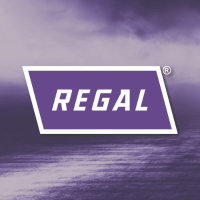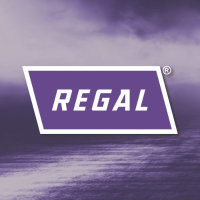
Regal Rexnord Corp
NYSE:RRX


| US |

|
Johnson & Johnson
NYSE:JNJ
|
Pharmaceuticals
|
| US |

|
Berkshire Hathaway Inc
NYSE:BRK.A
|
Financial Services
|
| US |

|
Bank of America Corp
NYSE:BAC
|
Banking
|
| US |

|
Mastercard Inc
NYSE:MA
|
Technology
|
| US |

|
UnitedHealth Group Inc
NYSE:UNH
|
Health Care
|
| US |

|
Exxon Mobil Corp
NYSE:XOM
|
Energy
|
| US |

|
Pfizer Inc
NYSE:PFE
|
Pharmaceuticals
|
| US |

|
Palantir Technologies Inc
NYSE:PLTR
|
Technology
|
| US |

|
Nike Inc
NYSE:NKE
|
Textiles, Apparel & Luxury Goods
|
| US |

|
Visa Inc
NYSE:V
|
Technology
|
| CN |

|
Alibaba Group Holding Ltd
NYSE:BABA
|
Retail
|
| US |

|
3M Co
NYSE:MMM
|
Industrial Conglomerates
|
| US |

|
JPMorgan Chase & Co
NYSE:JPM
|
Banking
|
| US |

|
Coca-Cola Co
NYSE:KO
|
Beverages
|
| US |

|
Walmart Inc
NYSE:WMT
|
Retail
|
| US |

|
Verizon Communications Inc
NYSE:VZ
|
Telecommunication
|
Utilize notes to systematically review your investment decisions. By reflecting on past outcomes, you can discern effective strategies and identify those that underperformed. This continuous feedback loop enables you to adapt and refine your approach, optimizing for future success.
Each note serves as a learning point, offering insights into your decision-making processes. Over time, you'll accumulate a personalized database of knowledge, enhancing your ability to make informed decisions quickly and effectively.
With a comprehensive record of your investment history at your fingertips, you can compare current opportunities against past experiences. This not only bolsters your confidence but also ensures that each decision is grounded in a well-documented rationale.
Do you really want to delete this note?
This action cannot be undone.

| 52 Week Range |
117.34
181.8047
|
| Price Target |
|
We'll email you a reminder when the closing price reaches USD.
Choose the stock you wish to monitor with a price alert.

|
Johnson & Johnson
NYSE:JNJ
|
US |

|
Berkshire Hathaway Inc
NYSE:BRK.A
|
US |

|
Bank of America Corp
NYSE:BAC
|
US |

|
Mastercard Inc
NYSE:MA
|
US |

|
UnitedHealth Group Inc
NYSE:UNH
|
US |

|
Exxon Mobil Corp
NYSE:XOM
|
US |

|
Pfizer Inc
NYSE:PFE
|
US |

|
Palantir Technologies Inc
NYSE:PLTR
|
US |

|
Nike Inc
NYSE:NKE
|
US |

|
Visa Inc
NYSE:V
|
US |

|
Alibaba Group Holding Ltd
NYSE:BABA
|
CN |

|
3M Co
NYSE:MMM
|
US |

|
JPMorgan Chase & Co
NYSE:JPM
|
US |

|
Coca-Cola Co
NYSE:KO
|
US |

|
Walmart Inc
NYSE:WMT
|
US |

|
Verizon Communications Inc
NYSE:VZ
|
US |
This alert will be permanently deleted.
 Regal Rexnord Corp
Regal Rexnord Corp
Regal Rexnord Corp
Regal Rexnord Corporation is a compelling narrative in the world of manufacturing, embodying the spirit of precision and efficiency that underpins the industrial engine. Born from the union of Regal Beloit Corporation and Rexnord's Process & Motion Control business, this company is woven into the fabric of machines and systems across a wide array of industries. Its extensive portfolio spans motors, bearings, gearing, conveying systems, and electronic drives—integral components that propel everything from factory automation to HVAC systems and beyond. Through these products, Regal Rexnord finds its strength: providing solutions that improve performance and energy efficiency, thereby adding value to clients' operations in almost every industrial sector.
The company thrives on its ability to innovate and customize, aligning perfectly with the dynamic needs of its diverse clientele. It capitalizes on both direct sales and a broad distribution network, ensuring its technology reaches end-users in a seamless manner. Their geographical footprint is extensive, allowing them to harness global market trends and mitigate risks associated with regional economic fluctuations. A crucial element of their business model is their focus on aftermarket services and support, which not only secures customer loyalty but also generates a steady stream of recurring revenue. By emphasizing both product excellence and customer relationships, Regal Rexnord has sculpted a robust business that effectively marries engineering precision with financial acumen.

Regal Rexnord Corporation is a compelling narrative in the world of manufacturing, embodying the spirit of precision and efficiency that underpins the industrial engine. Born from the union of Regal Beloit Corporation and Rexnord's Process & Motion Control business, this company is woven into the fabric of machines and systems across a wide array of industries. Its extensive portfolio spans motors, bearings, gearing, conveying systems, and electronic drives—integral components that propel everything from factory automation to HVAC systems and beyond. Through these products, Regal Rexnord finds its strength: providing solutions that improve performance and energy efficiency, thereby adding value to clients' operations in almost every industrial sector.
The company thrives on its ability to innovate and customize, aligning perfectly with the dynamic needs of its diverse clientele. It capitalizes on both direct sales and a broad distribution network, ensuring its technology reaches end-users in a seamless manner. Their geographical footprint is extensive, allowing them to harness global market trends and mitigate risks associated with regional economic fluctuations. A crucial element of their business model is their focus on aftermarket services and support, which not only secures customer loyalty but also generates a steady stream of recurring revenue. By emphasizing both product excellence and customer relationships, Regal Rexnord has sculpted a robust business that effectively marries engineering precision with financial acumen.































 You don't have any saved screeners yet
You don't have any saved screeners yet
